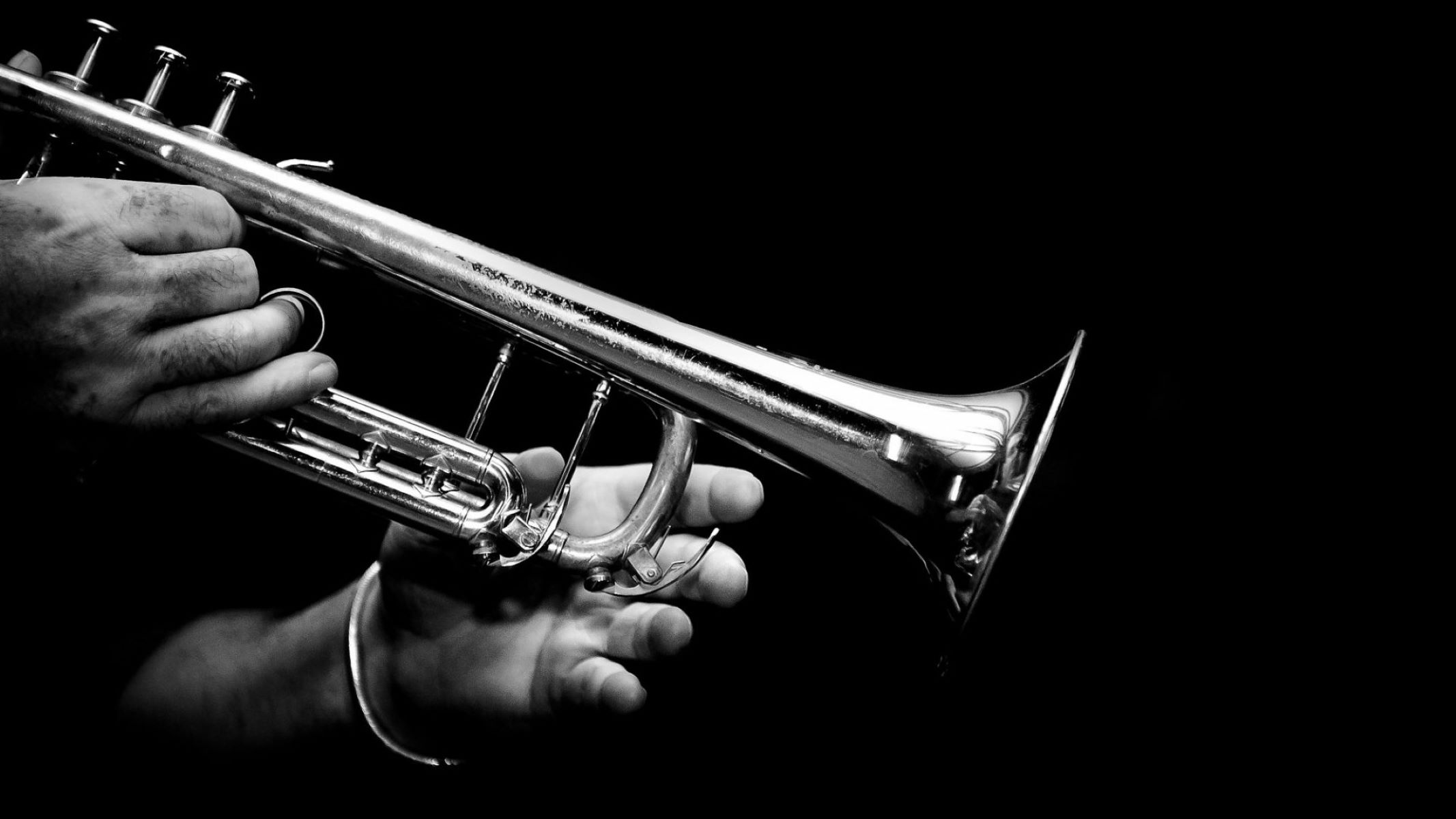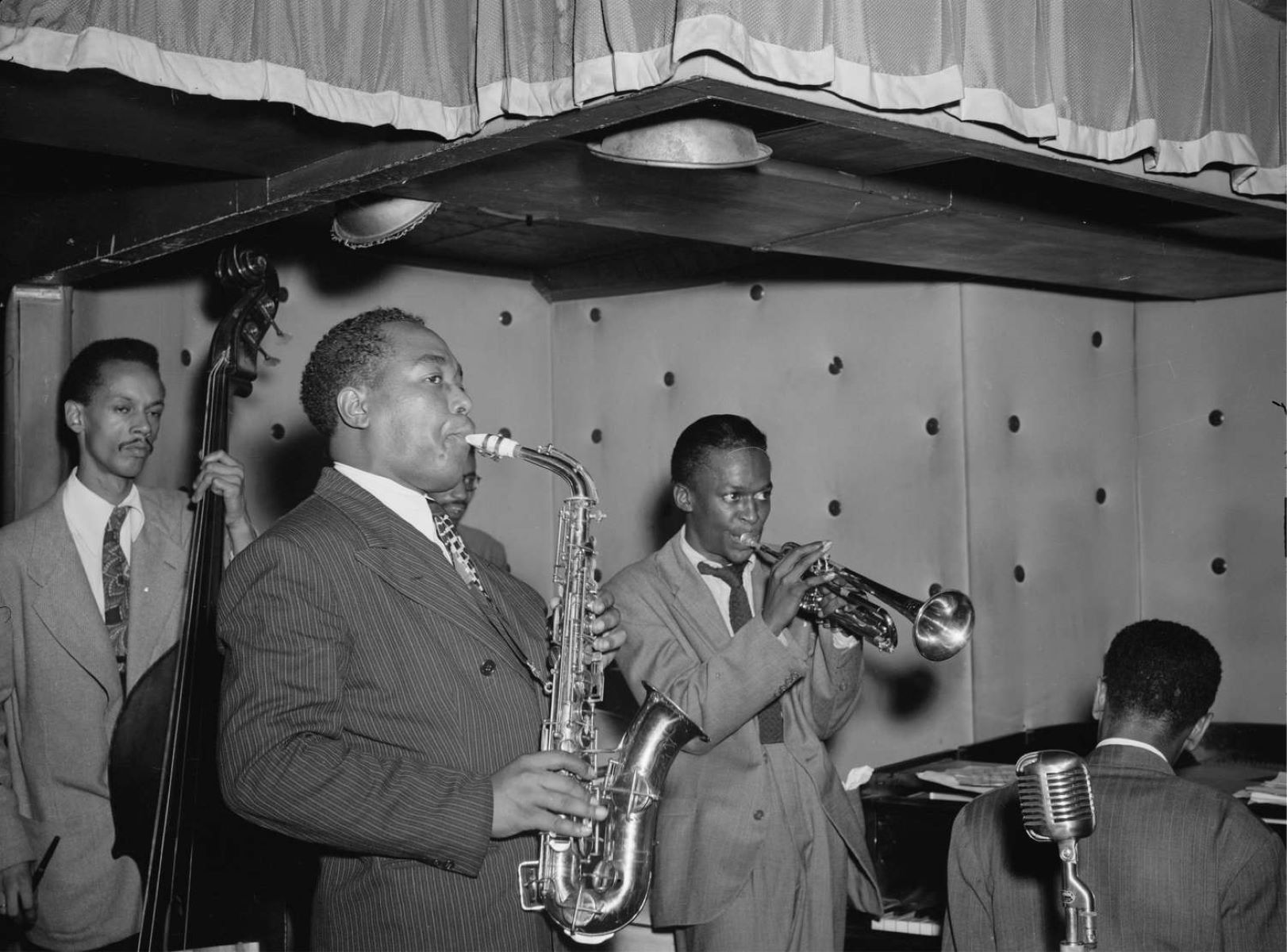Home>Genres>Jazz>What Is Unique About Jazz And What Makes Its Different From Other Types Of Music?


Jazz
What Is Unique About Jazz And What Makes Its Different From Other Types Of Music?
Modified: January 29, 2024
Discover the unique qualities of jazz music and what sets it apart from other genres. Dive into the history, improvisation, and distinctive rhythms that make jazz a truly one-of-a-kind musical experience.
(Many of the links in this article redirect to a specific reviewed product. Your purchase of these products through affiliate links helps to generate commission for AudioLover.com, at no extra cost. Learn more)
Table of Contents
- Introduction
- Historical Background of Jazz
- Characteristics of Jazz Music
- Improvisation in Jazz
- Syncopation and Swing in Jazz
- Use of Blue Notes in Jazz
- Complex Harmony and Chord Progressions in Jazz
- Role of Rhythm Section in Jazz
- Influence of African and European Musical Traditions on Jazz
- Comparison with Other Genres of Music
- Conclusion
Introduction
Jazz music is often referred to as America’s greatest cultural export. It is a unique and vibrant genre that has captivated audiences worldwide for over a century. What sets jazz apart from other types of music is its rich history, distinct characteristics, and the way it has continuously evolved throughout time.
With its roots deeply embedded in African and European musical traditions, jazz has become a powerful expression of cultural diversity and artistic innovation. It is a genre that celebrates improvisation, syncopation, and complex harmonies, creating a dynamic and engaging listening experience.
In this article, we will delve into the fascinating world of jazz and explore what makes it different from other types of music. We will discuss its historical background, key characteristics, and the unique elements that define the genre. Additionally, we will examine the influence of African and European musical traditions on jazz and how it compares to other genres.
Whether you are a jazz enthusiast or new to the genre, this article will provide a comprehensive overview of what makes jazz so exceptional. So sit back, relax, and let the melodic sounds of jazz transport you to a world of musical brilliance.
Historical Background of Jazz
Jazz emerged in the late 19th century in the African-American communities of New Orleans, Louisiana. It is deeply rooted in the experiences and cultural expressions of African slaves and their descendants, who brought their unique musical traditions with them to America. These traditions mixed with European influences to create a new form of music that would eventually become known as jazz.
The early development of jazz can be traced back to the African-American musical practices such as call and response, polyrhythms, and improvisation. The music of the African diaspora, including field hollers, work songs, and spirituals, played a significant role in defining the rhythmic and melodic foundations of jazz.
It was in the bustling city of New Orleans that jazz began to take shape. The city’s diverse population, including Creole, African, and European immigrants, contributed to the melting pot of musical influences that shaped the early jazz sound.
During the early 1900s, jazz migrated from the streets and clubs of New Orleans to other parts of the United States. The spread of jazz was fueled by the Great Migration, as African-Americans moved to northern cities in search of economic opportunities.
As jazz gained popularity, it went through several significant developments. The New Orleans jazz style, characterized by collective improvisation and a front-line of trumpet, clarinet, and trombone, laid the foundation for subsequent jazz movements.
In the 1920s and 1930s, jazz entered its golden age with the rise of the big band era. Led by influential musicians like Duke Ellington, Louis Armstrong, and Count Basie, big bands became synonymous with swing music. This era showcased the virtuosity of soloists and featured intricate arrangements that showcased the full power of an ensemble.
Over the years, jazz continued to evolve and absorb new influences. The emergence of bebop in the 1940s brought a more complex and harmonically adventurous style to the forefront, characterized by rapid tempos and intricate melodies.
Today, jazz has become a global phenomenon, with various subgenres and styles that continue to push boundaries and defy categorization. Its rich history and evolution have laid the groundwork for countless musicians to experiment, innovate, and contribute to the ever-expanding jazz landscape.
Characteristics of Jazz Music
Jazz music is renowned for its distinct characteristics that set it apart from other genres. These characteristics encompass aspects such as improvisation, syncopation, the use of blue notes, complex harmony and chord progressions, and the crucial role of the rhythm section.
One of the defining features of jazz is improvisation. Jazz musicians are known for their ability to spontaneously create melodies, harmonies, and rhythms on the spot. This improvisational aspect allows for individual expression and creativity, making each performance unique and captivating.
Syncopation is another hallmark of jazz. It refers to the emphasis placed on off-beats or unexpected rhythmic accents. This rhythmic complexity adds an element of surprise and energy to the music, creating a lively and infectious groove.
The use of blue notes is also prominent in jazz. Blue notes are flattened or bent pitches, which add a soulful and expressive quality to the music. These notes contribute to the emotional depth and rawness that is characteristic of jazz performances.
Jazz music is known for its complex harmonies and chord progressions. Unlike other genres that rely on simpler harmonic structures, jazz pushes the boundaries with intricate chord voicings and harmonic substitutions. This harmonic sophistication allows for rich and nuanced improvisation, creating layers of musical complexity.
The rhythm section plays a crucial role in jazz. Consisting of instruments such as the piano, bass, and drums, the rhythm section provides the rhythmic foundation for the music. The interplay and communication between these instruments create the pulse and groove that drives the music forward.
Moreover, jazz is a genre that embraces experimentation and fusion. It has a unique ability to incorporate elements from various musical traditions, including classical, Latin, African, and folk music. This blend of influences gives jazz its versatility and adaptability, allowing it to constantly evolve and reinvent itself.
In summary, the key characteristics of jazz music include improvisation, syncopation, the use of blue notes, complex harmony and chord progressions, and the importance of the rhythm section. These elements work together to create the vibrant and captivating sound that has made jazz a timeless and beloved genre.
Improvisation in Jazz
One of the defining features of jazz is its emphasis on improvisation. Unlike many other genres of music where the performance is strictly based on a predetermined arrangement, jazz musicians thrive on the spontaneity and creativity that comes with improvising.
Improvisation in jazz involves the real-time creation of melodies, harmonies, and rhythms. It allows musicians to express themselves freely and bring their own unique style and voice to the music. This element of improvisation is what gives jazz its sense of excitement and unpredictability.
When jazz musicians improvise, they draw upon their knowledge of scales, chord progressions, and melodic patterns. Through years of practice and study, they develop a deep understanding of the underlying musical structure. This foundation enables them to navigate the harmonies and create melodic lines that fit within the context of the music being played.
Improvisation in jazz often takes place during solos. A soloist will take the spotlight and play a series of improvised melodies over the chord progression being performed by the accompanying musicians. This allows the soloist to showcase their skills, creativity, and musicality.
One of the unique aspects of jazz improvisation is the concept of trading fours. This refers to the practice of taking turns between the soloist and other members of the band, typically lasting for four measures. Trading fours allows for dynamic interaction and interplay between musicians, creating a sense of dialogue and conversation within the music.
Another form of improvisation in jazz is collective improvisation. This occurs when all members of a group contribute to the improvised sections of a performance. In collective improvisation, musicians listen and respond to each other in real-time, creating a spontaneous and collaborative musical experience.
Improvisation is not limited to solo sections or specific moments within a performance. In jazz, musicians often take liberties with the melody, rhythm, and harmony of a composition. They may add embellishments, variations, and personal interpretations to give the music their own distinctive flair.
Overall, improvisation is at the heart of jazz. It is the driving force behind the genre’s continuous evolution and the source of its ever-changing nature. The ability to create and communicate in the moment is what makes jazz performances so exhilarating and captivating for both the musicians and the audience.
Syncopation and Swing in Jazz
Syncopation and swing are two integral elements that contribute to the distinctive rhythm and feel of jazz music. These characteristics give jazz its infectious groove and unmistakable energy.
Syncopation in jazz refers to the deliberate displacement of accents or rhythmic emphasis onto unexpected beats or off-beats. Rather than following a predictable and straightforward rhythm, syncopation adds a sense of unpredictability and creates a rhythmic complexity that sets jazz apart from other genres.
Syncopation can be heard in various aspects of jazz, including melodies, comping (accompanying chords), and improvisation. By accenting off-beats or placing strong accents on weak beats, syncopation brings a syncopated swing and a sense of forward momentum to the music.
Swing, on the other hand, can be described as the rhythmic feel or groove characteristic of jazz music. It refers to the unique way jazz musicians approach the relative durations of notes within a musical phrase. Swing rhythm is often achieved by playing a sequence of eighth notes with a triplet-like feel, producing a distinctive lilt and bounce.
The concept of swing originated in the early jazz era, particularly during the big band era of the 1930s and 1940s. It was popularized by legendary musicians such as Benny Goodman, Count Basie, and Duke Ellington. The swing rhythm creates a sense of drive, propelling the music forward and inspiring listeners to tap their feet or dance.
Both syncopation and swing work together to create the rhythmic foundation of jazz. The interplay between syncopated accents and the swing feel gives jazz its infectious and swinging groove. This distinctive rhythm serves as the backdrop for improvisation and allows musicians to explore and express themselves within the jazz idiom.
Syncopation and swing are not only found in the rhythm section of a jazz ensemble but also in the melodies and solos played by instrumentalists. Jazz musicians master the art of navigating through syncopated rhythms while maintaining the swing feel, creating a dynamic and engaging musical experience.
It is important to note that syncopation and swing are not limited to jazz alone; they have also influenced and been incorporated into various other genres of music, including rock, pop, and funk. However, within jazz, these elements have a special prominence and are deeply ingrained in the genre’s identity.
In summary, syncopation and swing are essential components of jazz music. Syncopation adds rhythmic complexity and unpredictability, while swing creates an infectious and propulsive groove. Together, these elements contribute to jazz’s unique rhythmic character and make it a truly distinctive and captivating genre.
Use of Blue Notes in Jazz
The use of blue notes is a fundamental characteristic of jazz music. Blue notes are specific pitches that are slightly altered from the traditional diatonic scale, often played with a flattened or bent pitch. These notes add a unique, expressive, and emotive quality to jazz performances.
The origins of blue notes can be traced back to the African-American musical traditions brought to America during the era of slavery. These traditions emphasized bending, sliding, and microtonal inflections in vocal and instrumental music, allowing for a more nuanced and soulful expression.
In jazz, blue notes often occur on the third, fifth, or seventh degree of the diatonic scale. For example, in a blues scale, the third and seventh scale degrees are frequently lowered, creating a distinctive “bluesy” sound. These flattened or bent blue notes add a touch of melancholy, tension, and longing to the music.
The use of blue notes in jazz allows musicians to convey a wide range of emotions and connect with listeners on a deep, emotional level. These notes contribute to the expressive nature of jazz performances, allowing artists to evoke feelings of joy, sadness, passion, or longing.
Blue notes can be heard in various styles and subgenres of jazz, including blues, bebop, and even modern jazz. Whether it’s the smoky, soulful sound of a saxophone or the expressive vocal improvisations of a jazz singer, the use of blue notes helps create a distinctive and powerful musical experience.
Furthermore, the incorporation of blue notes in jazz allows for additional harmonic and melodic possibilities. These altered pitches create tensions and dissonances that can be resolved in creative and unexpected ways. The interplay between the blue notes and the surrounding harmonies adds a complex layer of texture and color to jazz compositions and improvisations.
The use of blue notes is not exclusive to jazz, as they have also influenced a wide range of musical genres, including blues, rock, and R&B. However, jazz musicians have often pushed the boundaries of blue note usage, exploring different melodic and harmonic contexts to create unique and innovative sounds.
In summary, the use of blue notes is a defining characteristic of jazz. These altered and expressive pitches contribute to the emotional depth, tension, and complexity of jazz performances. Blue notes have played a significant role in shaping the sound of jazz throughout its history, adding a sense of authenticity and soulfulness to the genre.
Complex Harmony and Chord Progressions in Jazz
Jazz music is known for its complex harmony and intricate chord progressions. Unlike many other genres, which often rely on simple and straightforward chord structures, jazz pushes the boundaries of harmonic expression, creating a rich and sophisticated musical language.
In jazz, musicians explore a wide range of harmonic possibilities, utilizing unique chord voicings, substitutions, and extensions. These harmonic variations create a sense of tension, color, and richness in the music that sets jazz apart.
One of the key aspects of complex harmony in jazz is the concept of chord substitutions. Musicians often replace standard chords with more harmonically interesting alternatives to create new and unexpected sounds. These substitutions can include tritone substitutions, diminished chord substitutions, or chord extensions, among others.
The use of extended chords, such as ninth, eleventh, and thirteenth chords, is also prevalent in jazz harmony. These chords add additional color tones and harmonic tension, allowing for greater harmonic complexity and versatility in improvisation.
Moreover, jazz musicians often apply chromaticism, the use of chromatic tones, to create interesting melodic and harmonic movement. Chromatic passing tones and chromatic approaches to chords contribute to the richness and sophistication of jazz harmony.
Another hallmark of complex harmony in jazz is the incorporation of reharmonization. Reharmonization involves altering the original chord progression of a song to create new harmonic possibilities. This technique allows musicians to bring fresh interpretations and creativity to standard tunes.
The exploration of complex harmony and chord progressions in jazz is not limited to composers and arrangers. Improvising musicians also navigate through these harmonies as they spontaneously create melodic lines. The knowledge and understanding of the harmonic structure enable jazz improvisers to craft inventive and harmonically rich solos.
It is worth noting that the complexity of jazz harmony requires a deep understanding and proficiency in music theory. Musicians study chord-scale relationships, harmonic analysis, and various techniques to fully grasp the intricacies of jazz harmony.
Complex harmony and chord progressions allow jazz musicians to continuously innovate and explore new sonic landscapes. They provide a canvas for musical expression and contribute to the intellectual and emotional depth of the genre.
Overall, the complex harmony and chord progressions in jazz exemplify the genre’s commitment to musical innovation and artistic exploration. By going beyond traditional harmonic conventions, jazz musicians create a unique and sophisticated musical tapestry that captivates audiences and continues to push the boundaries of musical expression.
Role of Rhythm Section in Jazz
The rhythm section plays a vital role in jazz music, providing the rhythmic foundation, groove, and harmonic support for the entire ensemble. Comprised of instruments such as the piano, bass, and drums, the rhythm section is the backbone of any jazz ensemble.
The piano is an essential part of the jazz rhythm section, serving multiple functions simultaneously. It provides harmony through its chordal comping, supporting the soloists by outlining the underlying chord progression. The pianist also contributes to the rhythm by playing rhythmic patterns and syncopated accents, enhancing the overall groove of the music.
The bass serves as the anchor of the rhythm section, providing the foundation for the harmonic and rhythmic structure of the music. It establishes the root notes of the chords, giving a solid reference point for the other musicians. The bassist also adds rhythmic complexity through walking basslines, creating a sense of movement and forward momentum in the music.
The drums serve as the driving force of the rhythm section, providing the pulse, groove, and dynamic energy. The drummer sets the tempo, establishes the rhythmic patterns, and improvises rhythmic variations and fills. The drummer’s ability to listen and respond to the other musicians is crucial in creating a cohesive and tight rhythm section.
The interaction between the members of the rhythm section is crucial in jazz. They communicate and respond to each other in real-time, creating a sense of musical dialogue and interplay. The coordination and synchronization between the piano, bass, and drums play a significant role in crafting a cohesive and engaging jazz performance.
In addition to providing the rhythmic foundation, the rhythm section in jazz also contributes to the harmonic support of the ensemble. The pianist and bassist work together to outline the chord progressions, often incorporating voicings and substitutions to enhance the harmonies. They add a harmonic richness and complexity that supports the improvisations of the soloists.
The role of the rhythm section extends beyond accompanying soloists. They also help shape and structure the overall form of a jazz composition or arrangement. Through their rhythmic and harmonic choices, they contribute to the arrangement and provide transitions between different sections of the music.
Overall, the rhythm section is an integral part of jazz music, providing the rhythmic pulse, harmonic support, and dynamic energy that propels the ensemble. The coordination, interplay, and creativity of the pianist, bassist, and drummer create the foundation for jazz performances, allowing other musicians to freely explore and express themselves within the jazz idiom.
Influence of African and European Musical Traditions on Jazz
Jazz music is a result of the fusion and interaction of African and European musical traditions. The convergence of these diverse cultural influences has shaped and molded the unique sound and characteristics of jazz.
African musical traditions have played a significant role in the development of jazz. The rhythms and syncopations of West African music, brought to America by African slaves, have had a profound impact on the rhythmic foundation of jazz. Elements such as call and response, polyrhythms, and improvisation were integral parts of African musical practices and were blended into the DNA of jazz.
The use of blue notes, bent pitches, and vocal inflections in jazz can also be traced back to the African musical traditions. These expressive techniques contribute to the emotional depth and soulfulness of jazz performances.
On the other hand, European musical traditions have influenced the harmonic and formal structure of jazz. The adoption of European instruments, such as the piano and saxophone, has shaped the instrumentation and sound of jazz. The concept of harmony, with its chordal progressions and functional tonality, came largely from European musical traditions.
The influence of European classical music is particularly evident in the development of jazz compositions and arrangements. Many jazz musicians have drawn inspiration from classical composition techniques, incorporating elements like orchestration, counterpoint, and thematic development into their works.
The European influence is also evident in the evolution of jazz from its early forms to more complex movements such as cool jazz, modal jazz, and jazz fusion. These subgenres showcased a greater emphasis on formal structures, intricate harmonies, and intricate arrangements, all influenced by European musical traditions.
The interchange and amalgamation of African and European musical traditions in jazz have resulted in a dynamic and ever-evolving genre. It is a testament to the power of cultural exchange and collaboration, as jazz continues to embrace diverse musical influences from around the world.
Furthermore, the influence of African and European musical traditions extends beyond the musical elements. Jazz is deeply rooted in the social and cultural history of African-Americans, providing a platform for artistic expression and a means of addressing social and political issues. The freedom of expression and the spirit of improvisation in jazz reflect the resilience and creativity of African-American communities.
In summary, jazz music is deeply influenced by the fusion of African and European musical traditions. The rhythmic complexity, melodic expressiveness, and harmonic sophistication of jazz can be traced back to the African traditions, while the formal structure and harmonic concepts find their origins in European influences. This cross-pollination of cultures and musical traditions has made jazz a powerful and enduring art form.
Comparison with Other Genres of Music
Jazz stands apart from other genres of music due to its unique characteristics, improvisational nature, and diverse influences. Let’s explore how jazz compares with other popular genres:
- Classical Music: Jazz and classical music diverge in several ways. Classical music is composed and highly structured, whereas jazz emphasizes improvisation and spontaneity. Classical music often employs written notation, while jazz relies on lead sheets and chord progressions as a starting point for improvisation. Additionally, classical music tends to have a more symphonic and orchestral sound, while jazz is primarily based on smaller ensembles and features individual instrumental improvisation.
- Blues: Jazz and blues share a close relationship, with jazz owing a great deal to the blues tradition. Both genres heavily feature improvisation and use similar scales and compositional techniques. The main distinction lies in the structure and mood of the music. Blues typically follows a 12-bar or 8-bar pattern, while jazz has a more complex harmonic structure. Jazz often incorporates elements of blues as a foundation for improvisation.
- Rock and Pop: Jazz differs from rock and pop primarily in terms of rhythm, harmony, and improvisation. Rock and pop music tend to have a more straightforward rhythmic feel, often based on a steady backbeat. Harmonically, rock and pop songs often rely on simple chord progressions, while jazz explores more intricate and chromatic harmonies. Jazz also emphasizes improvisation and extended solos, whereas rock and pop styles tend to feature pre-determined vocal melodies and guitar solos. However, jazz and rock have intersected in various fusion genres, resulting in creative blends of both styles.
- Rhythm and Blues (R&B): R&B evolved from the blues tradition and incorporates elements of jazz, gospel, and soul. While both jazz and R&B share a common origin in African-American musical traditions, R&B incorporates more structured song forms and emphasizes vocal performance. R&B tends to have a stronger focus on lyrics and vocal melodies, while jazz highlights instrumental improvisation as a primary means of expression.
- Latin Music: Jazz and Latin music intersect and influence each other in various ways. Latin jazz, a fusion of jazz and Latin American musical traditions, combines syncopated rhythms, complex harmonies, and improvisation. Latin music, such as salsa or bossa nova, tends to have a more prominent rhythmic emphasis and dance-oriented nature. Both genres share a rhythmic vitality and melodic richness, albeit flavored by different cultural traditions.
While jazz differs from these genres in terms of structure, style, and improvisational approaches, it is important to note that genres often intersect and influence one another. Jazz has had a profound impact on the evolution of popular music, and its spirit of innovation and improvisation continues to permeate a wide range of musical styles.
By comparing jazz with other genres, we can appreciate the distinctiveness and versatility of jazz, highlighting its history, cultural significance, and its enduring status as a genre that defies categorization and continually evolves.
Conclusion
Jazz is a genre like no other, with a rich and storied history that spans continents and cultures. Its fusion of African and European musical traditions has given birth to a dynamic and ever-evolving genre that celebrates improvisation, syncopation, and complex harmonies.
From its origins in the African-American communities of New Orleans to its global influence, jazz has become a powerful expression of cultural diversity and artistic innovation. The unique characteristics of jazz, such as improvisation and the use of blue notes, set it apart from other genres of music, creating a distinct sound and style.
The role of the rhythm section in jazz cannot be overstated, as the piano, bass, and drums work together to provide the rhythmic foundation, groove, and harmonic support for the entire ensemble. Their interplay and collaboration set the stage for the improvisations of the soloists and shape the overall texture and energy of jazz performances.
Jazz’s influence extends beyond its own genre, with elements of jazz finding their way into a wide range of musical styles. Whether it’s the syncopated rhythms of rock and pop, the bluesy expressions in R&B, or the fusion of jazz and Latin American traditions, jazz has left an indelible mark on the musical landscape.
Understanding the unique characteristics of jazz, its historical background, and its influences allows us to appreciate the genre’s creativity, innovation, and ability to connect with audiences on an emotional level. Jazz continues to push boundaries, inviting musicians and listeners alike to explore new frontiers of musical expression.
In conclusion, jazz stands as a testament to the power of cultural exchange and artistic collaboration. Its fusion of African and European musical traditions has given rise to a genre that embodies the spirit of improvisation, rhythm, and innovation. Jazz’s impact on music cannot be overstated, as its influence reverberates across genres and generations, making it a truly timeless and treasured art form.











